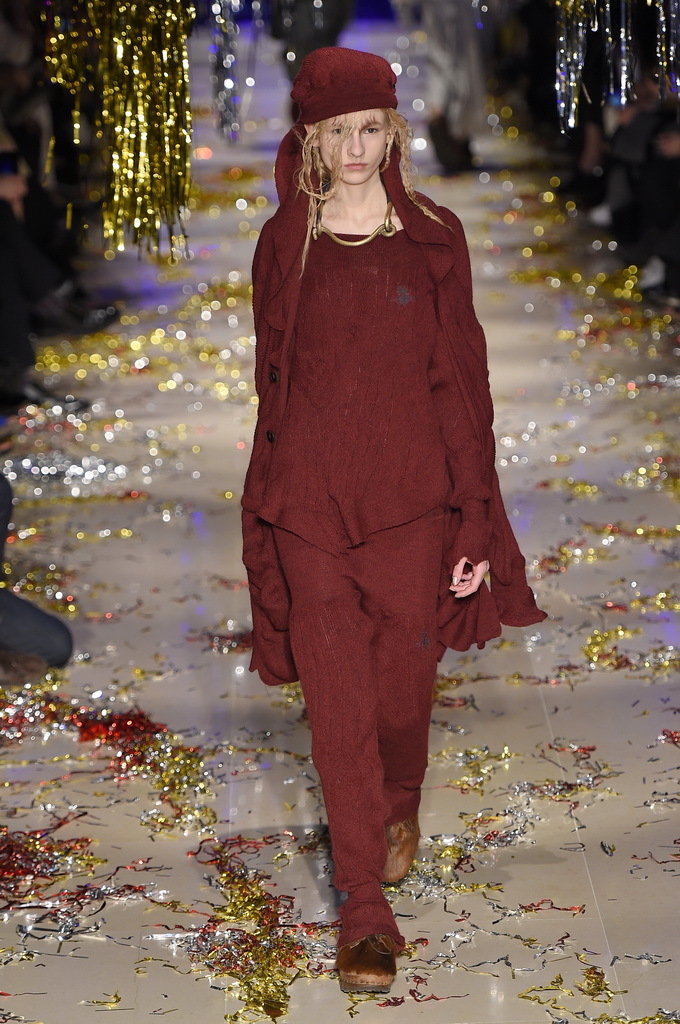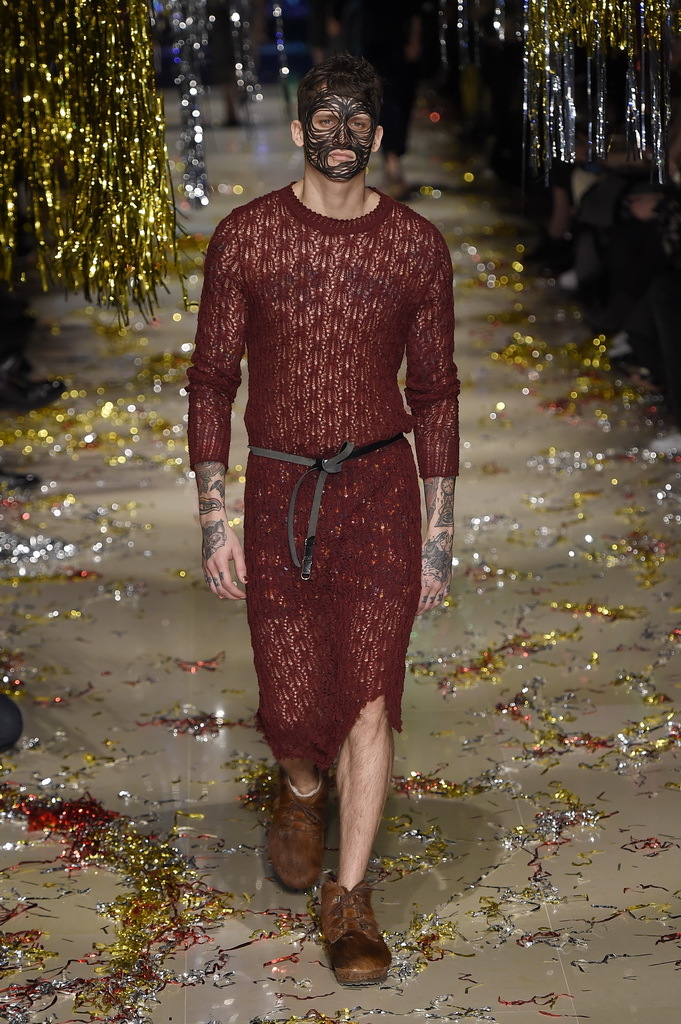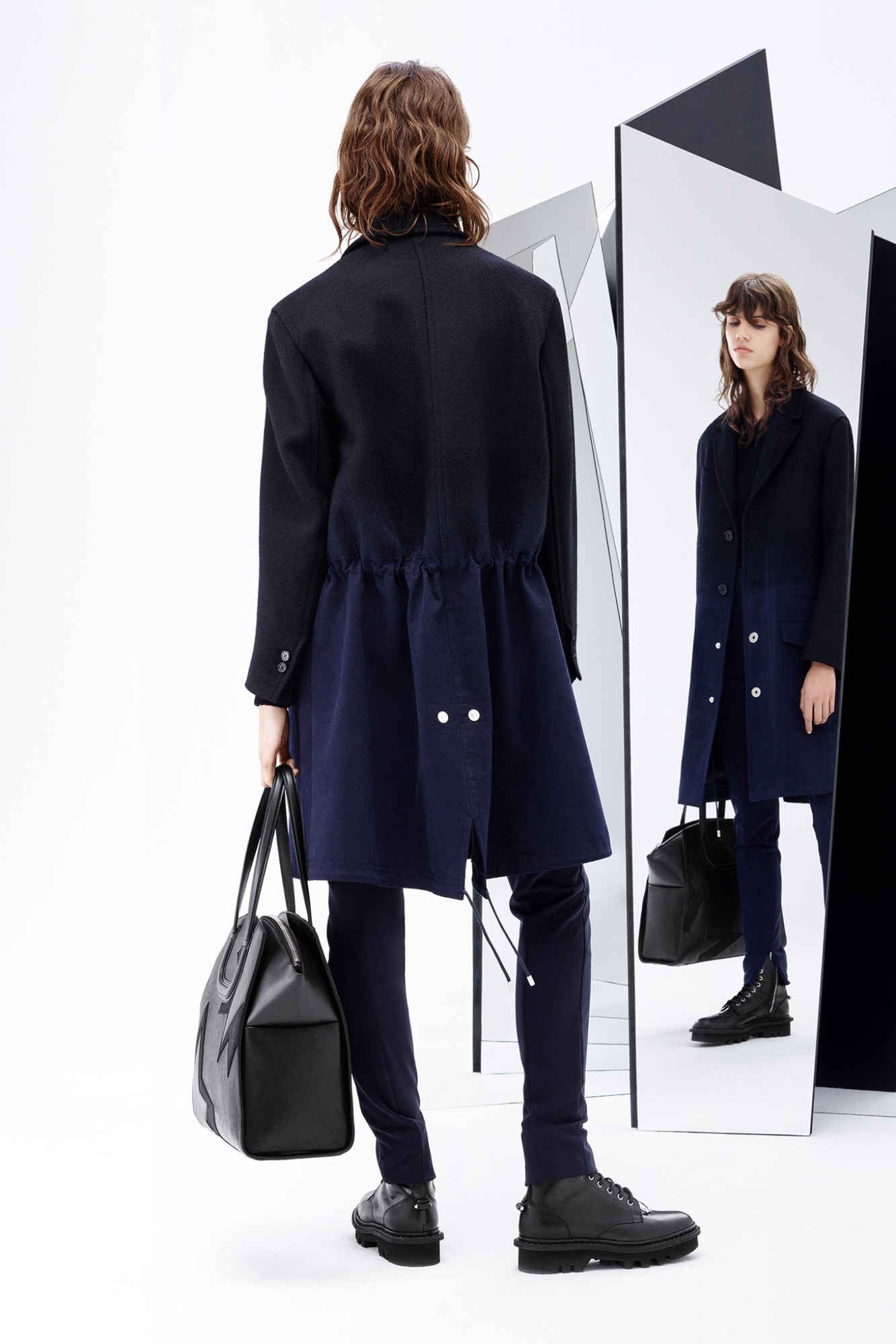Unisex—there’s a term we haven’t used since the late 90s. So how did it find its way onto the Vivienne Westwood runway on the fifth day of the Paris shows where women wore broad-shouldered tailoring and men dresses? Maybe it starts with that wave of neo-feminism that’s been washing over fashion and its surrounding world for some time now. It could be sourced from those irreverent London designers — Meadham Kirchhoff, Craig Green, Ed Marler — whose clothes are worn so nonchalantly by both sexes, or perhaps all credit goes to Alessandro Michele’s new androgynous vision for Gucci. Rumor has it his first men’s show in January had to be made so quickly, he simply used some early samples from the upcoming women’s collection on boys. If that’s true, he’s got a soul mate in the Queen of Punk.


“Trousers for women, yes! Dresses for men, the same dresses that women wear? Do that! It takes a lot of trial and error. Dresses without a woman’s waist!” Dame Vivienne wrote in her show notes. “I love the change in proportion: the big shoulders give a small head — it’s so sexual because it’s new, it makes you look at the person from outside. It’s all so sexual because we’re looking at people with new eyes.” Her show — walked by Gwendoline Christie and Paz de la Huerta; women, who are both easily transformable into the androgynous — pretty much did what it said on the tin, but it’s a statement that never stops feeling powerful. A bride and groom closed the show, she in a suit, he in a dress, and they were hot. They kissed and it was sexy. Not in a humorous or twisted or gay or straight way — it was just sexy. Dame Vivienne and Andreas Kronthaler followed suit, consecrating their show with a marital runway kiss.
Neil Barrett’s fall/winter 15 collection played with the idea of what his teenage idol, Siouxsie Sioux, would look like in Neil Barrett circa right now. “When I was at school, I’d go see her in concert in London. It was that sort of 80s idea. What would that ex-punk wear nowadays?” Barrett said at his presentation. Back then, Sioux wasn’t averse to the odd menswear element, fashioning a punkish style that could transform any garment into something sexy, women’s or men’s. “It is just one thing for me. It’s a total blend of men’s and women’s,” Barrett said, walking through his collection of brilliant outerwear — bikers, cloaks, coats — and the sexy garments he’d put underneath, from long body-hugging skirts to mannish trousers and luxe angora knits. “They become one story rather than being men’s pieces or women’s. That doesn’t count anymore. And it’s not really that sort of non-sexual situation. It’s not androgyny,” he noted.


“People make such a big thing of it,” Barrett said, referring to the labels attached to gender and clothes. “I’ve always done men’s for women, but I somehow feel it’s gone beyond androgyny. That is a piece of the women’s wardrobe, it’s not necessarily a man’s piece for a woman. It’s gone beyond that — for so many years. It’s a non-issue.” While Gucci was definitely ‘androgynous’ and Vivienne Westwood was doubtlessly ‘unisex,’ Barrett had a point. Fashion and wearers of fashion today hardly need labels like that to define their style or sexuality. In other words, a women’s perfume smells as good on a man as it does on a woman. “What are we talking about?” Dame Vivienne concluded in her show notes. “Time: human beings have forgotten more than we know. But we sort of know what’s human. Let’s go for it: Study the past. There’s a hint of it in the future.” Preach.
Credits
Text Anders Christian Madsen
